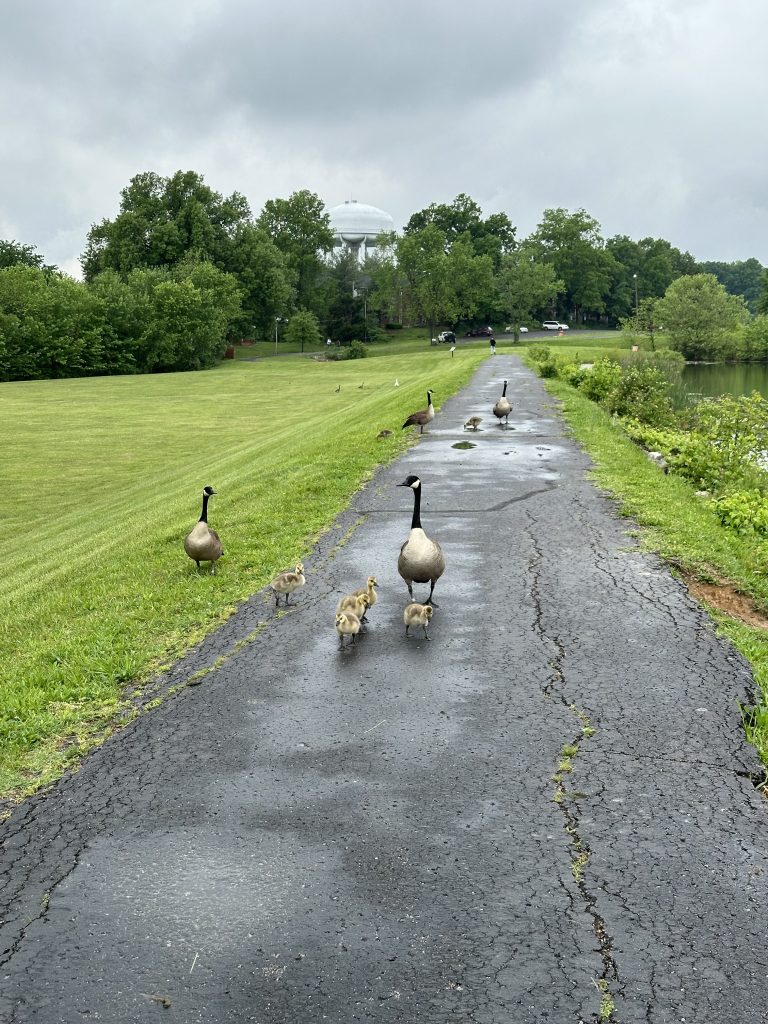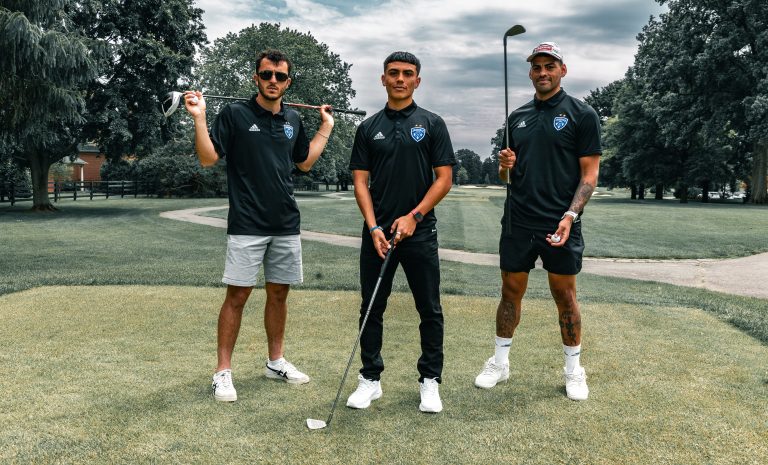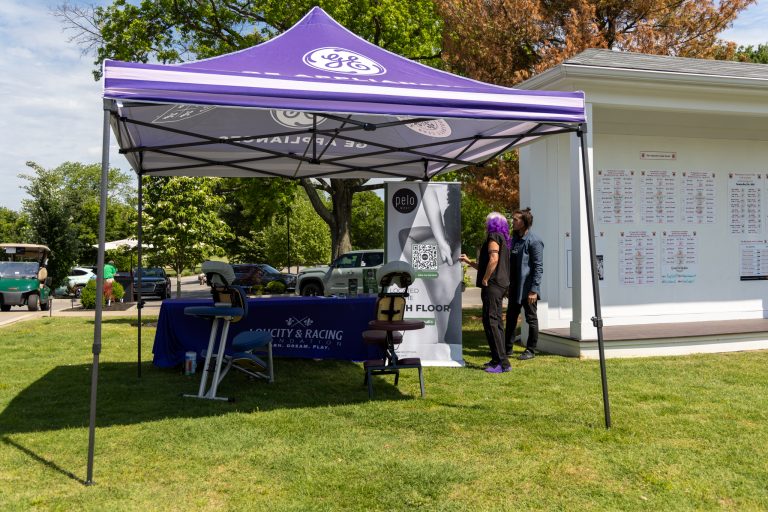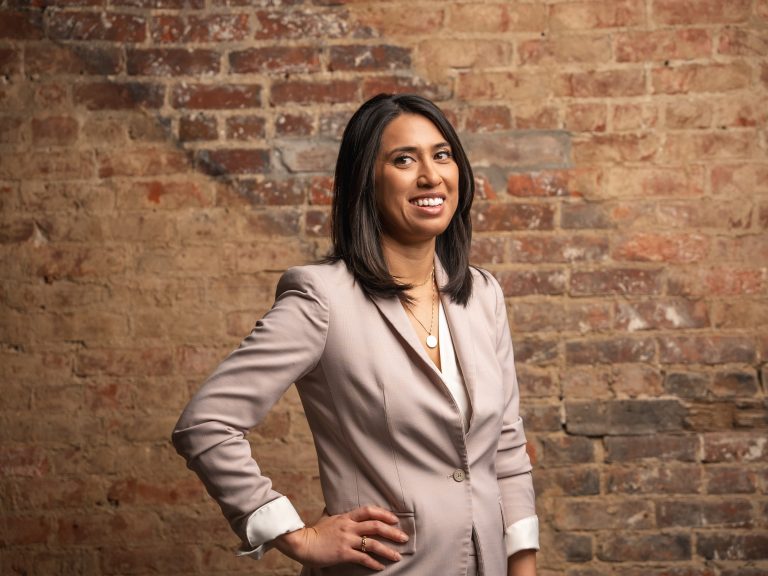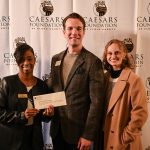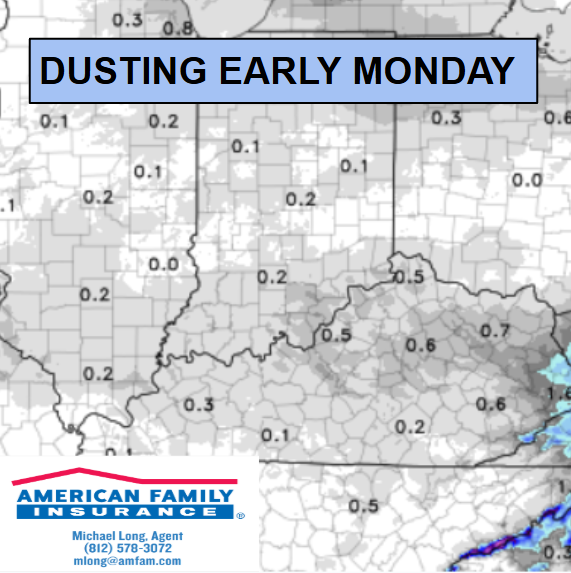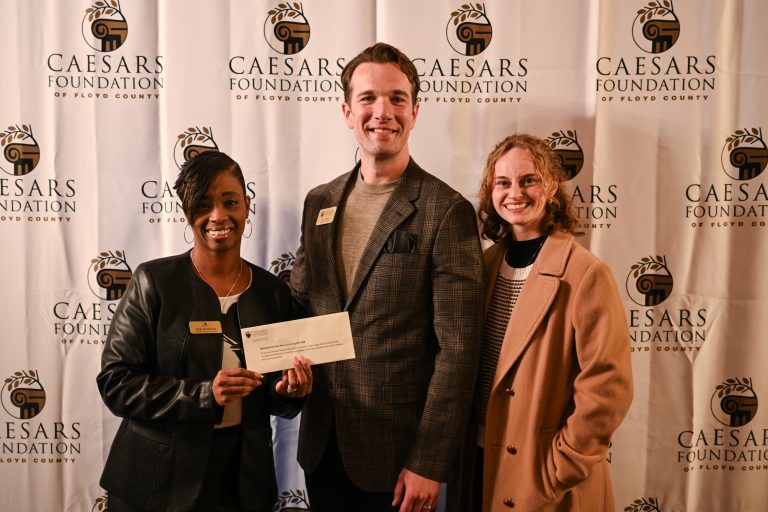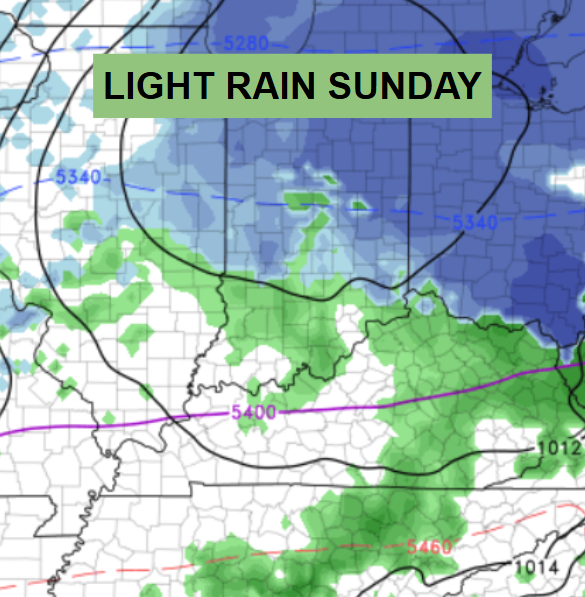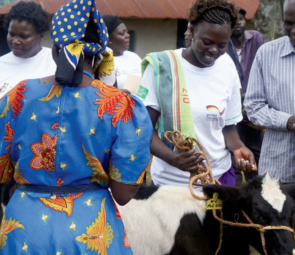

Local writer goes to Kenya to learn, comes back with a new sense of purpose
BY ROBYN DAVIS SEKULA | COURTESY PHOTOS
I am sitting in a quiet room in the home of Philister, a farmer in far Western Kenya. She lives on a piece of sweeping land under the bluest skies I’ve ever seen. The only sounds I can hear are chickens clucking, the wind rustling tall corn, birds singing and the conversation we’re having with a resilient farmer in a dim house.
It is quiet here, but it is not peaceful. Not for me, anyway. That’s because here in Kenya, I feel the weight of poverty in a way I never have before – and it will change me.
But I don’t know that yet.
What I’m feeling here today in Philister’s packed mud home is my first pangs of understanding that Africa is both gloriously beautiful, sacred and stirring – but it is accompanied by crushing poverty. Philister has land – plenty – to grow the crops she needs to feed her family. But she doesn’t yet have the knowledge she needs to grow the right kinds of crops or to have enough left over to sell.
Philister has an additional burden: she is HIV positive. Most days, she skips meals so that her children can eat at the end of the day. She takes her HIV medication on schedule; the government gives it to her for free. But the doctor is hours away, and her only way to get there is to walk. She can’t even afford to ride on the back of someone else’s motorbike, which is a common, inexpensive way for people to get where they need to go.
It might cost a quarter or 50 cents. She can’t afford that.
When your choice is eat or ride, you choose eat. Every time.
When your choice is to feed your kids or feed yourself, you choose your kids. Every time.
And this is the great pain of Africa – or at least this part of Kenya. It isn’t that people don’t have electricity, or the stuff that we Americans have. I thought that’s what would be sad, the contrast between the ridiculous abundance of stuff in my home and the sparsity of their lives.
But no. That’s not what’s sad.
Instead, what is sad is that they don’t have enough to eat. That every day is another day they wake up unsure if they’ll be able to have a meal. That every day could be the day that challenges them past the point of survival.
And that is why I’m in Kenya. I’m here with Send a Cow, a 30-year-old non-profit organization based in the U.K. I’m on their U.S. Board of Trustees. In my life in New Albany, I’m a public relations and social media consultant with a heart for non-profit work. I’ve done a lot with the Presbyterian Mission Agency as a client and continue to seek out such work. I’m a mom of three girls. I’m 45. I do CrossFit when I get there; that’s usually three times a week.
My world is beyond comfortable. It’s luxurious.
And now, I’m ashamed and not quite sure what to do about it. It was just day one of a week-long trip to Kenya.
FIRST VISIT TO AFRICA
I’ve never been to Africa. Heck, I’ve never set foot in a developing country, save for a January afternoon in Tijuana, Mexico. I’m here to learn about Send a Cow and to understand the work this nonprofit is doing to lead Africans to teach each other about agriculture.
I’m involved in Send a Cow because a dear college friend, Douglas Smith, asked me to get involved. Doug is an extremely intelligent, progressive Christian, like me, and when he asked me to join Send a Cow’s board, he told me it was low commitment and an interim appointment, just until they could decide on strategy for the U.S. group.
But I don’t do anything halfway, and suddenly, I was holding small meetings for Send a Cow supporters in Louisville and committing to a trip to Kenya.
What sold me on Send a Cow was the research I did before I committed. I poked around Send a Cow’s website. I watched videos that explained their work. I read about them. Everything I saw confirmed what I want to see from nonprofits and ministries: their work is done in partnership with people who live and work in the countries they serve.
This means that the organization doesn’t show up with 200 cases of food, shoes, Bibles – whatever – and drop it off and leave. And it also means that the organization hires and works with native people, who know best the culture, language and nuances of the people they serve.
Send a Cow employs about 250 people in Africa; all but three are Africans. They work in Kenya, Ethiopia, Zambia, Uganda, Burundi and Rwanda. The workers there are peer farmers who go from farm to farm offering help and advice on raising livestock as well as crops. They are helping farmers in Kenya move away from tobacco, which provides no nutritional value, strips the land of valuable nutrients and no longer brings in the cash it once did. They teach farmers specific farming methods, such as keyhole gardens, which include a compost pit in the center, and plants positioned around it in a ring. It holds water well and keeps crops alive during times of drought. They also provide vital training in gender and social development so that husbands and wives can work better together.
The name suggests that Send a Cow sends cows to developing countries. When it started almost 30 years ago, that’s exactly what the organization did. Send a Cow is finding now that the organization can have greater impact in some areas that they serve by training people in agriculture, rather than or along with giving cows, goats or livestock. The Kakrao project will work directly with 600 farmers in Africa; if the organization attempted to give livestock instead, it would take far longer and the cost would be prohibitive. Also, the organization doesn’t ship cows over any more; they buy local livestock that will fare better, since it is native to the country.
Livestock – particularly cows – are a wise investment, though, for Send a Cow. A cow provides dairy, and the manure will enrich the soil on the farm and allow crops to flourish. Then the cows breed and the offspring are passed along to another farmer through Send a Cow. We had the opportunity to attend a passing ceremony, and it was lovely to see the joy in the faces of the farmers receiving a cow.
But it’s not always the right choice, and I love that Send a Cow evaluates carefully what farmers need before working with them.
Kenya varies in climate and soil, so needs vary. But one thing that affects all: Kenya is often stricken by drought. The country depends on the “long rains,” but they did not come consistently this year. Some places we traveled had had too much rain to grow what they called ground nuts (perhaps peanuts, I wasn’t really sure). Other places were so dry they had struggled to keep banana trees alive.
PREPARATIONS FOR TRAVEL
In preparing for my trip, I listened to a podcast called “Otherwise?” that was created by a Kenyan journalist. She spends 10 to 15 minutes each week exploring an aspect of modern Kenyan life. Hearing her talk about drought and famine in Kenya helped prepare me for this trip, as did her discussion with a medical student about the doctors’ strike that had occurred earlier in 2017. In Kenya, public hospitals are run by the government, and doctors were striking for better pay and working conditions for themselves, and for better patient care.
I also sought out Kenyan-born authors to read and understand more about the country. One thing to know about Kenya: it was a British colony until 1963, and you can see this influence throughout the country. While the native tongue is Swahili for most of the country, many people we met, even in the most remote parts of Kenya, spoke English.
I’m not really interested in the stories of the white colonists who came to Kenya, no matter how benevolent. Out of Africa doesn’t interest me. What do those who are truly born of Kenyan soil have to say about their world? That’s what I want.
Many of the names of people we met were downright Biblical: Titus, Nicodemus, Isaac, Sarah… and that directly reflects the high number of Western missionaries who came to Kenya. Some early missionaries erased some of the native culture of the country and contributed to the westernization of Africa.
I saw some of the worst parts of U.S. culture popping up all over Western Kenya as we drove through small towns: Coca-Cola ads at nearly every stop. It bothered me deeply to see this country with high rates of malnutrition advertising so heavily for soda pop.
But back to Philister.
BEFORE SEND A COW
We started our first day at Philister’s home, meeting her granddaughter and her mother-in-law, who told us she was 97 but none of us were quite sure of that. She seemed more like a tough 75. This is a place where people may not even know their own birth dates.
From Philister’s, we drove to the home of Caren, who spoke to us brightly about her life. Caren lives in Kakrao where HIV rates are twice as high as Kenya’s national average and most of the population lives on less than $1 per day. On this day, she seemed almost perky as she told us how her children remind her it’s time to take the medication. Later, we learned that she was probably putting on a good face for us. Her three children, the oldest of whom looked about 10, stood around her as she talked to us under the shade of a tree. They were not in school that day; she may have kept them home to meet us or may not have been able to send them for some other reason. I wasn’t sure, and such questions felt like judgement. So, I didn’t ask.
Our next stop was a dairy co-op. This was the first breath of hope we saw on our trip. The co-op leaders explained that farmers were bringing in milk and banding together to sell their milk as a group, getting a higher price than they could any other way. They had purchased a pasteurizing machine, which was expected to arrive soon, and would dramatically improve their efforts.
At dinner that night, we were exhausted, drained and quiet. The day had been hard and sad, and had left us feeling a sense of emptiness as we contemplated what the lives of these two women were like on a daily basis. We looked at our own food gratefully, knowing we were fortunate to have it.
Though the day was heavy, it was a good way for us to understand what life was like for farmers without Send a Cow. We’d spend the next three days seeing what productive farms looked like.
When Send a Cow starts its program at Kakrao this fall, both Philister and Caren will receive agricultural training and help. Knowing that was the first glimmer of hope I had on the trip and it set the tone for the rest of the week.
 LIFE IN KENYA
LIFE IN KENYA
I get motion sick very easily. I worried what the travel would be like in Kenya, but somehow found myself in the third row of a Land Rover-style vehicle we called “the beast.” Funny thing: when you are staring at the outside world in a moving vehicle, you don’t get car sick. And that’s all I could do in the beast.
Titus Sagala, country director for Send a Cow, sat next to me in the third row, and I had a million questions for him. What’s that vehicle? Why are there so many people on that motorbike? What happens if you get into an accident? Do you get speeding tickets here? How do you say thanks in Swahili?
Titus put up with our questions with the patience of a saint. There was so much to see, absorb and learn simply staring out the windows.
For the record, Titus’ answers to the questions were:
• “That’s a tuk tuk.” (It was a three-wheeled vehicle used as a type of taxi, giving hired rides.)
• “People pay to ride on the back of other people’s motorbikes. I’ve seen people put their cows on motorbikes.” (What? I never saw that but I wanted to. Desperately.)
• “If you get into an accident, mostly, you go on with your life if everything is OK.” In fact, we did, and we just went on.
• “Speeding tickets are a big deal and can cost a lot of time and money if you have to go to court.”
• “Asante sana.”
We saw lots and lots and lots of people on foot throughout Western Kenya on main roads. They walked with shoes, without, some dressed up in smart suits or children in school uniforms. We saw people in western-style clothes and people in more traditional dress, especially women, which included a head wrap. Some were barefoot; most were not.
Just as you might imagine, women carried things on their heads, backs stick-straight as they balanced wide, shallow bowls filled with bananas on top of their heads. More commonly, we spotted tall, white bags on their heads. They carried water in big, yellow jugs – but not on their heads.
My western viewpoint told me this was a hard life. To them, it is just life. You walk where you need to go, you learn to balance things on your head at a young age, you grow your own food, you hang up laundry to dry outside. You live in a mud hut because it is what you have. If you are fortunate, you receive a full education, but nothing is offered for free beyond primary school.
And that presents the common thread I found throughout this trip, the thing that unites us all and changes my perspective: We all want the same things. Me, sitting in my home in New Albany, happy and air-conditioned: I want a good education for my children, and for them to receive as much education as possible.
Philister, on her farm in Kenya right now as you read this, wants that, too. She wants her children to receive as much education as possible.
We all want the same things. For some, though, it is much more a struggle to get it.
MORE FARMS, AND HOPE
The farmers we visited in Kenya in the next three days of our trip all want that, too. Every time we asked about their hopes and dreams for the future, it was never for themselves. It was for the next generation. Children are inescapable in Kenya; they surround you at every farm. If you live in Kenya, you’re raising your own children, and likely someone else’s, too, maybe a sister or brother who has passed on or who has “gone away,” as we were told more than once as part of a family story. Where did they go? They shrug. No one knows.
These farmers met us joyfully. They wanted to show us their beautiful land, the many crops they grew, their prized livestock. At one farm, the three goats bore the names of the two Send a Cow peer farmers who had helped her, and the third was named Nelson Mandela. Banana trees were lush, green and large.
A male farmer, whose wife had worked with Send a Cow for years before her death, proudly showed off the kitchen he used, which simply had two designated spots to build fires for cooking, and proudly showed off the drying rack for dishes that he had built. Until someone from Send a Cow showed them, they simply do not know it isn’t sanitary to put washed dishes on the ground.
They just do not know, and as simple as that change is, sanitation can save lives.
At this farm, we were invited to plant a tree there, and they would name it for us. It was a tiny sapling. The farmer dug a small hole, and we placed the tree in it. I covered it in dirt, watered it a bit and everyone clapped.
It seems ridiculously silly, doesn’t it? At this point in the trip, I was craving the ability to provide some type of tangible help, and this was more than welcome.
There is a tiny sapling in Africa named Robyn. It makes me stupid happy to think about it.
After we planted our trees, we toured another farm. This farmer had a drip irrigation system, which Send a Cow helped her create. They bought the hoses with holes punctured in them and would fill a large cistern with water they carried from a stream or watershed. Gravity would carry the water through the hose and gently water the crops.
This farmer stood in the midst of her bright green field, brimming with crops, in a beautiful orange dress and sang us a song about how much Send a Cow meant to her. It was delightful, and it conveyed to us the joy that she was experiencing every day in providing for herself and her family.
So simple, but so powerful – and one of many powerful women we met.
 GIRL POWER
GIRL POWER
At the end of days two and three, we visited co-ops where people came together to work with each other and grow their farms. The loveliest part to me was the “girl power” involved: those leading the way at each place were women. One man in our group asked why that was, and he was answered by one of the men, who said simply that women return messages and calls, and they get things done. The other men in attendance laughed, and shook their heads in agreement.
The women had such a strong sense of pride in their groups. They sewed dresses out of the same bright fabric to create uniforms that would all identify them as part of the same co-op.
They even loaned each other money, doing some table banking, for expansions or other needs.
The shift from that first day that started with Philister to the next few days was a change from resignation to joy, and that was wonderful to see. It was largely that sense of community that changed things for these women. The presence of a peer farmer from Send a Cow or a member of your co-op buoyed your spirits. It has long seemed to me that large amounts of money are necessary to solve big problems, such as hunger in Africa. But it’s not that way.
Solving big problems starts with listening. It starts with understanding the root causes of the problems. It starts with knowing that the person who stopped taking their HIV drugs did so because it made them feel terrible, and they felt terrible because they didn’t eat enough before they took the drugs.
Why don’t they have enough food? Because they aren’t growing the right kinds or using the best techniques.
While I can’t solve the hunger problems in all of Africa, I can help Philister, Caren and 598 other families grow more, and better, food. I can help them protect their watersheds.
I can do all of that.
SO, WHAT NOW?
I landed in Louisville on Mother’s Day evening. My husband, mother and three daughters were waiting for me at the airport. We went directly to Red Robin for something I desperately wanted: a cheeseburger. And it was delicious.
I fell into a deep sleep that night in my own bed with vivid dreams due to the malaria medication. I took a single day to edit down my photos, nest at home, catch up on laundry and just enjoy the quiet.
But by day two at home, I could feel something in me shifting.
There is a shift that occurs in probably anyone who has truly experienced a developing country and has really listened, absorbed and understood what they were seeing.
My question now is what I will do about it.
I’m not certain I have an answer. But I do know this: I feel a deep sense of duty to change the world. For me, that service will be through Send a Cow. I want to continue to serve in any way I’m asked. I will go to Africa when they ask me to go. I will support this organization financially. I will speak about this incredible work to whomever will have me. It is the support I can give, here, right now.
You see, it’s not really necessary for me, a person with no background in agriculture or living in Kenya, to give up everything here and move there to help. Chances are, I’d do more harm than good.
The best thing I can do is remember, listen, read, and talk about my experiences.
The best thing I can do is continue to see.
Once you see, you cannot unsee, says Greg Ellison of the Chandler School of Theology at Emory University. I heard that quote in my work with the Presbyterian Foundation, and I’ve never forgotten it.
I have seen Kenya.
I have seen Philister.
I have seen Caren.
I cannot unsee them.
And I never want to.
Robyn Davis Sekula is a public relations, marketing and social media consultant and speaker who lives in New Albany. She is a member of the Board of Trustees of Send a Cow, an international non-profit that works in some of the poorest countries in Africa. In her working life, she primarily consults with organizations and business in communications, social media, public relations and marketing and is a frequent speaker on social media, communications and branding, and yes, she would be happy to talk to local groups about Send a Cow’s work in Kenya. A former journalist, Robyn has served as President of the Society of Professional Journalists, Louisville Pro Chapter, and as Membership Chair of the national SPJ organization. In her personal time, she is a mother of three girls, CrossFit enthusiast, avid traveler and music junkie.
 Instead, what is sad is that they don’t have enough to eat. That every day is another day they wake up unsure if they’ll be able to have a meal. That every day could be the day that challenges them past the point of survival.
Instead, what is sad is that they don’t have enough to eat. That every day is another day they wake up unsure if they’ll be able to have a meal. That every day could be the day that challenges them past the point of survival.
If You Go…
GENERAL: Kenya is an excellent place to visit, but do be aware that 2017 is a presidential election and it is more chaotic than usual there. Protests can break out spontaneously and without much warning. I visited Western Kenya with Send a Cow, and while I found it fascinating, I would only recommend it if you’re going with a group and have identified what you’d like to do there. Nairobi is definitely worth your time and has lots to offer tourists. Coastal areas, which I did not visit, sound lovely, but are predominantly Muslim, so take care in how you dress.
GETTING THERE: I flew from Louisville to Newark, and from Newark made my way by taxi to JFK airport. The taxi ride was about $130 including tolls, so this was far pricier than I expected. Train/subway, bus and shuttle are also options. I took the subway/train on the way back. JFK handles most international flights out of NYC. I flew Emirates, a Dubai-based airline that I highly recommend. It was about a 13- hour trip from JFK to Dubai, and then another five-hour flight from Dubai to Nairobi. Once in Nairobi I had to go through customs and immigration and find my group. I exchanged money at the airport just to have some on hand in case I needed it.
PAPERWORK: A visa is necessary to enter Kenya. It is an easy application online, and it took about two days to get approved. It costs about $50. If you plan to visit other countries in Africa, go for the East Africa visa. You may have to prove that you have the Yellow Fever vaccine to enter some countries. You need a passport, too.
HEALTH: I visited the University of Louisville Travel Clinic, but note that the clinic does not accept health insurance and you will spend about $500 to get fully vaccinated for a trip to Africa. This clinic handled all of my vaccinations and gave me a prescription for malaria prevention medication. To prepare, I received the Yellow Fever vaccine, which is in short supply, and Hepatitis A and B (given as one combined shot, but you will need two more boosters for it to become permanently effective). I opted for typhoid prevention in a pill because it lasts longer, though it is a pain to take with very specific instructions that must be followed.
SUPPLIES: Since I was attempting to take only carry-on luggage, I opted against liquid bug repellant and sunscreen. Instead, I bought a Neutrogena sunscreen in a stick, and Ben’s Bug Wipes, which have 30 percent DEET to protect against mosquitos. Most hotel rooms have mosquito nets for use at night, but I didn’t tend to use them, as I found fighting my way out of them at 3 a.m. to go to the bathroom immensely confusing. Most rooms I stayed in were air-conditioned and I didn’t have windows open.
GUIDE: I hired Richard Makau Kiathe of Maks Tour Adventures to drive me and two friends around Nairobi for an entire day and take us to the airport the following day. He rented a safari vehicle and recommended places to go. His services were a must for us, and he was terrifically knowledgeable, friendly and just all-around great. I highly recommend hiring a guide.
CLOTHING: I opted for lightweight, long-sleeved shirts and cargo-style pants. I carried about five outfits and hand-washed a shirt or two in a hotel sink. I also had my hotel in Nairobi wash a pair of pants
 BEING SAFE: Nairobi does offer Uber, but I would not recommend taking any taxi or car service that your hotel doesn’t call for you. You may get hit with a high price you were not expecting if you decide to take any taxi you see on the street. Keep your passport in your room, preferably in a safe, and keep a color copy of the main pages separately in your luggage, just in case you lose your passport or it is stolen. As a white person in Nairobi, I definitely stood out and people did want to talk to me, and after a bit of conversation, would hit me up for money. You can decide to give or not. Keeping a little loose cash in your pocket is a better option if you do feel you want to give some away.
BEING SAFE: Nairobi does offer Uber, but I would not recommend taking any taxi or car service that your hotel doesn’t call for you. You may get hit with a high price you were not expecting if you decide to take any taxi you see on the street. Keep your passport in your room, preferably in a safe, and keep a color copy of the main pages separately in your luggage, just in case you lose your passport or it is stolen. As a white person in Nairobi, I definitely stood out and people did want to talk to me, and after a bit of conversation, would hit me up for money. You can decide to give or not. Keeping a little loose cash in your pocket is a better option if you do feel you want to give some away.
WATER: Don’t drink tap water or even brush your teeth with it. Also, beware of juice from restaurants or hotels, as it may be watered down with local tap water.








